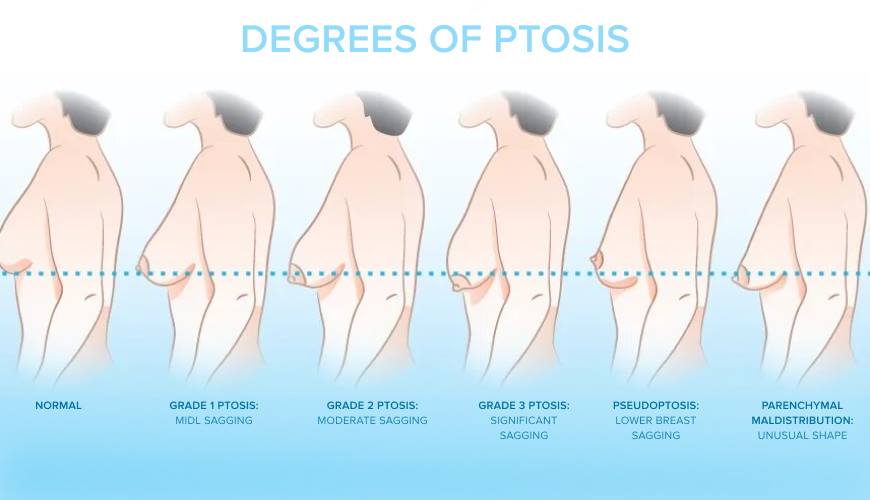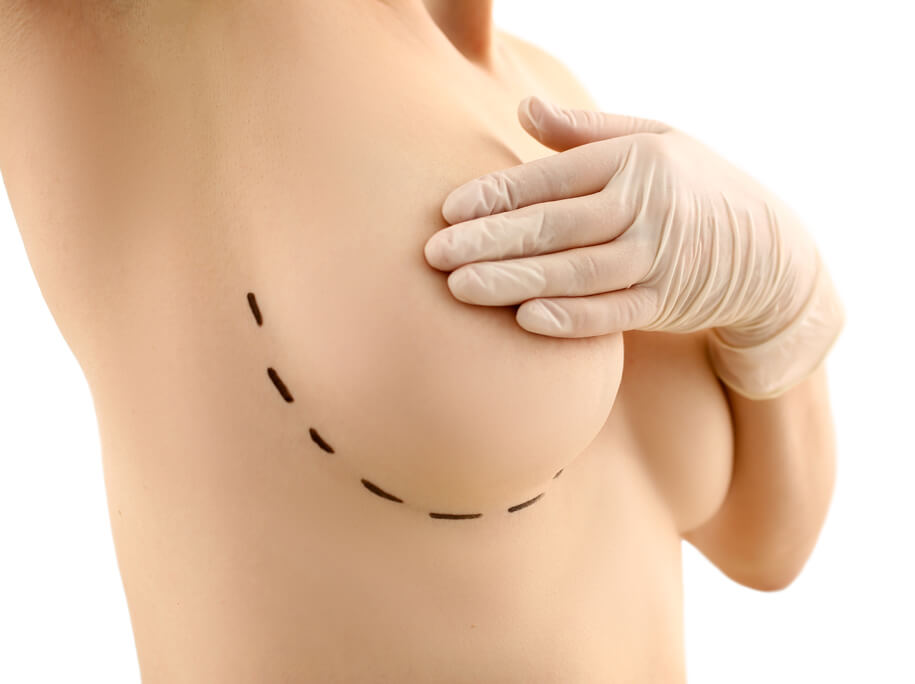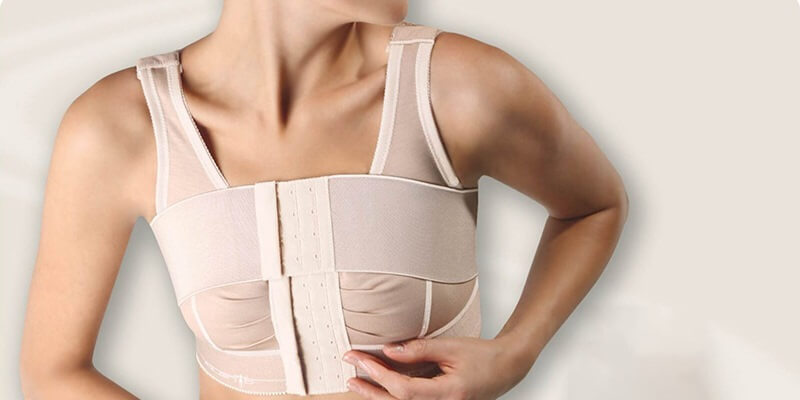Aesthetic breast surgery is operations that restore the symmetry and appearance of the breasts.
There is a large amount of material on this topic, but many women still cannot find answers to their questions. Are these operations safe? How is a mammoplasty carried out? Will the achieved result be worse than the initial state of the breast?
The article contains the most important and relevant information on plastic surgery on the mammary gland. We have answered the most popular questions about mammoplasty.
Reasons why women undergo breast augmentation

Mammoplasty usually refers to breast augmentation. But, in fact, this operation has a large number of aesthetic and medical indications.
The main reasons for mammoplasty:
- Reconstruction after trauma or surgery for breast cancer;
- Reduction of the mammary gland in order to reduce the load on the thoracic spine;
- Correction of the shape of the breast due to age-related changes;
- Breast enlargement to achieve the desired aesthetic effect.
Fears of patients before mammoplasty
Many women hesitate to undergo surgery for fear of worsening their health, appearance or quality of life. Most often, the following questions may be of concern before the operation:
- Surgical complications (dispersed scars, reoperation, large scars, and so on). If the operation is performed by an experienced doctor and the postoperative hygiene rules are followed adequately, there are no significant surgical risks.
- Tactile discomfort from the presence of implants in the breast and the appearance of an unnatural appearance of the breast. Modern implants, when properly positioned, are invisible and not felt under the skin.
- Difficulties with ultrasound and mammography, a ban on breastfeeding. Such problems belonged to the old generation of implants, now they are irrelevant.
Diagnostics before mammoplasty
Examinations are required before any operation, and mammoplasty is no exception. Diagnostics for breast plastic surgery includes standard preoperative examinations and a set of measures that help to choose the method of surgery and the type of implants.
List of required analyzes:
- General analysis of blood and urine;
- Biochemical blood test;
- Coagulogram – a check of blood clotting;
- Examination by a general practitioner.
To understand the technical capabilities of breast surgery, the patient conducts an in-person or online consultation with a doctor. This usually requires only a mammogram and a visual examination by a surgeon or a photo of both glands. In some clinics, modeling of the future appearance of the mammary gland is also carried out before the operation.
Contraindications to mammoplasty
The operation is not performed if the patient has:
- Decompensated diabetes mellitus;
- Acute respiratory illness;
- The course of chemotherapy and radiation therapy in the course of oncology treatment.
Is aesthetic breast surgery possible in your case?
Types of breast surgery
Depending on the volume of the breast removed, the size of the breast and the patient’s aesthetic wishes, a suitable operation can be selected.
All operations on the mammary gland are divided into 2 main groups – plastic and reconstructive.
Breast plastic surgery
Let’s take a closer look at what plastic surgery on the mammary gland is. This is an operation in which all manipulations occur exclusively with the tissue of the existing gland; its shape does not need to be recreated.
The main types of plastic surgery:
- Sectoral resection (lumpectomy) is used when it is necessary to remove a small area of the breast. Most often these are operations for an abscess, hematoma or fibroadenoma. In this case, the plastic surgeon is able to suture the operated gland in such a way that there is no defect or difference in comparison with the second gland. If it is not possible to achieve symmetry with the second mammary gland with the help of only the operation, additional injection methods (lipofilling) are required.
- Mastopexy (breast lift) – is used for physiological prolapse of the mammary gland, tubular form of the mammary gland, after pregnancy and breastfeeding. Such operations make it possible to form the mammary gland of the desired appearance.
- Reduction mammoplasty (breast reduction) – is used if the breast size is uncomfortable for the patient. Excessive breast volume with a thin build can strain the spine and cause pain.
- Placement of implants – used to increase the size of the breast.
Reconstructive mammoplasty
Reconstructive surgery is required if part of the breast or the entire breast is removed. Reconstruction is carried out using the patient’s own tissues; often, implants are also used during reconstruction.
The main types of reconstructive operations:
- TRAM(transverse rectus abdominis myocutaneous flap)– to carry out this operation, the doctor uses an area of the skin, subcutaneous fat and an area of the anterior abdominal wall to recreate the breast. The average size of the removed area is 14×25 cm. In this case, the abdominal area is slightly damaged.
- TDL – using the latissimus dorsi muscle for surgery. The advantage of the method is the short duration of the operation of 1,5 hours. The disadvantages are the limitation on the volume of the tissue that can be transplanted and the formation of a noticeable scar on the back.
- LD (Latissimus dorsi flap)– breast reconstruction with areas of the back tissue, taken at the level of the thoracic spine. Such a donor area is thin and can be used to correct small defects.
- DIEP – it is a microsurgical method of breast reconstruction. It is similar to TRAM, but in the case of DIEP, the abdominal area is not used. A necessary component of the transplanted area is a blood vessel. This operation allows to perform bilateral reconstruction in the case of complete removal of both glands. The operation requires a highly qualified surgeon, a specially equipped microsurgical operating room. For the patient, this is 4-8 hours in the operating room and 3-5 days in the hospital.
- Gluteal flap– the material for grafting is taken from the buttocks. Such reconstruction allows obtaining large-volume mammary glands without harming the donor area.
The most popular reconstruction method is TRAM, followed by breast reconstruction with a gluteal flap. Often during reconstruction, in addition to own tissues, implants are also used. This allows to achieve large volume and symmetry of the mammary glands (when placing implants in both glands).
Breast augmentation implants
Nowadays, mainly silicone implants are used. They come in various shapes and differ in content.
In terms of shape, breast implants are:
- Anatomical (teardrop) – as close as possible to the natural appearance of the breast;
- Round – suitable for a small size of the gland and, if the patient wishes, to obtain a pronounced absence of a submammary fold. They also give a push-up effect.

By surface type:
- Smooth – practically not used, but suitable for patients with a tendency to fibrotic processes;
- Rough – have an uneven surface so that in the healing process, their own tissues are more actively involved in the regeneration process and create a dense layer around the implant. This will keep the implants securely in place and look symmetrical.
By filling:
- Filling with standard cohesive gel – this filling allows to achieve the most natural structure;
- Filling with highly adhesive gel – in this case, the breast feels a little denser than usual, but when the implant ruptures, the gel does not go beyond its limits;
- Filling with soft touch gel – a lighter version of the highly adhesive gel.
The most famous companies that produce quality implants are Polytech, Allergan-Natrelle (McGhan) and Motiva.
Non-surgical methods of aesthetic breast reconstruction
For minor problems that do not require radical intervention, injection methods are used to improve the appearance of the breast. All of them belong to the types of lipofilling and are divided into the following types:
- Simple lipofilling – the transfer of own adipose tissue from thighs, buttocks, or abdomen to the mammary gland. With this method, doctors can enlarge the mammary gland or fill in the voids that have arisen during plastic or reconstructive surgery.
- BRAVA lipofilling – the wearing of special underwear that helps to stretch the breast tissue in combination with lipofilling. This makes it possible to enlarge breasts up to one size without surgery.
- PRP lipofilling – in addition to removing the body’s own fat cells into the chest area, injections of platelet-rich blood plasma are also done. This technique promotes better adipose tissue engraftment. In addition, fat cells begin to divide intensively, as a result of which the volume of the mammary gland increases in a natural way.
How much does plastic and reconstructive surgery cost
Operations can vary greatly in complexity. The surgeon performs an operation on one or both breasts. The cost of the operation is also influenced by the cost of implants, the general pricing policy of the clinic and the presence of concomitant diseases, which may require a longer stay in the intensive care unit.
Average cost of complete correction of both breasts:
- Ukraine, Turkey – from $5 000;
- Czech Republic, Poland – from $6 000;
- Italy, Spain – from $8 500;
- Israel – from $12 000.
Rehabilitation after mammoplasty

Rehabilitation after plastic and reconstructive breast surgery depends on the type of surgery.
After sectoral resection, the patient needs to undergo 2-4 dressings in the clinic. It is recommended to limit heavy lifting and some physical activity for several months.
After the placement of implants and mastopexy, visits to the gym, sauna and the load on the upper shoulder girdle may be prohibited for 6-12 months. Supportive underwear (special bra) may be required for 2-4 months.
With complex operations (most often TDL and LD), weightlifting and some other sports can be banned forever. Otherwise, the recovery is the same as in other operations.
Special rehabilitation techniques, such as physiotherapy exercises or physiotherapy, are not required.
Frequently asked questions about mammoplasty
What are combined operations?
These are operations in which:
- More than one method of exposure to the mammary gland has been used;
- In the process of plastic or reconstruction, both our own fabrics and artificial materials were used.
How long does breast reconstruction surgery take?
- Sectoral resection can last from 10-15 minutes to an hour;
- Placement of implants takes on average 40 minutes per breast;
- Reconstructive surgeries last from 1,5 to 3 hours;
- Complex microsurgical reconstructive interventions can last up to 8 hours.
How is the areola restored?
The areola is formed from the body’s own tissues. For this, skin is taken either from the tissue of a healthy areola, or from the labia minora, less often from areas of the skin of an intact gland. To give the areola color, a medical tattoo is performed.
How to choose implants for breast augmentation?
If there are no health features such as fibrosis, scars and contractures (otherwise, during the healing process around the implant, fibrosis may occur, which will lead to displacement of the implant), it is better to give preference to rough implants of an anatomical shape. For the first operation, no more than 1 size from that which the patient has at the moment.
Will implants need to be changed?
Most modern implant models never need to be changed. However, there are inexpensive implant models that have a shelf life of 10 years, and after this time, the implant can really become unusable.
Do you want to make an appointment with a plastic surgeon?
Do you have any questions?
Get a free consultation from our experts



